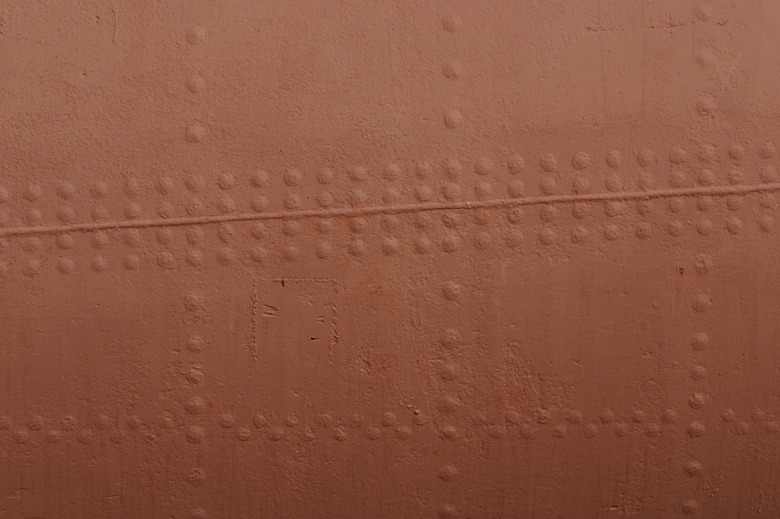How To Choose Rivets
Rivets are a type of hardware used to fasten objects to one another. They are commonly used in building and manufacturing applications, but are also found on items such as clothing and tools. To ensure your rivets will function as intended, it's important to select the correct rivets for your project. Consider factors size as size, corrosion resistance and material as you compare different types of rivets.
Step 1
Choose a rivet that's made of the same material as the items you are going to fasten. For example, if you are fastening two steel plates together, use a steel rivet. Try to find a rivet that's made from the same alloy, if possible. If you are choosing a rivet for use with a soft aluminum object, choose a similar alloy for your rivet, such as a #1100 aluminum.
Step 2
Select the correct length for your rivet. According to The Sheet Metal Handbook, the length of a rivet is measured from the underside of the head to the tip of the stem. The head itself is not included in this measurement. The length of the rivet should be equal to the thickness of both objects you are fastening, plus 1.5 times the diameter of the rivet's stem. For example, a 1/2-inch diameter rivet being used to fasten two one-inch thick plates will have to be 2 3/4 inches long.
Step 3
Compare blind versus solid rivets. Solid rivets are the most common, and require two people to install them. One installer stands on one side of the objects and the other installer stands on the opposite side. When only one side of the object is accessible, a single installer can use a blind rivet instead of a solid one.
Step 4
Evaluate corrosion-resistance. If the rivet will be subject to moisture or chemicals, use a material that will resist rusting and corrosion. Both stainless and galvanized steel are known for their corrosion-resistance, while steel is highly subject to rust.
Step 5
Consider the diameter of the rivet. Rivets must be fit exactly to the hole they are being installed in. Because these holes are typically pre-drilled, it's important to find a rivet that's the same diameter as this hole. A rivet that's too large won't fit, while one that's too small will not fasten securely.
Step 6
Think about the different head designs that are available. Snap or pan heads project out from the surface of an object after they are installed. Countersunk heads will sit flush with the surface of the object, and should always be used when drag or wind resistance are a concern.
Step 7
Consider using self-piercing rivets (SPR). While most rivets require holes to be pre-drilled, SPR can be installed in a single step. This can save time on larger jobs, and can reduce the number of tools needed to complete the project.
References
- Ron and Sue Fournier; The Sheet Metal Handbook; 1989
- Machine Design
- University of Denver
